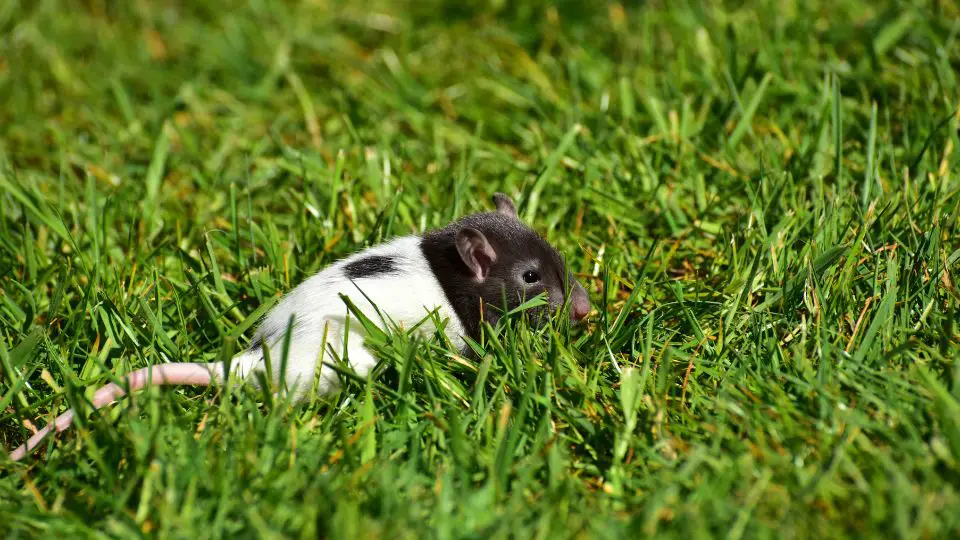Rats are excellent climbers, capable of scaling vertical structures like fences, gutters, and brick walls. The average rat also boasts a jump distance of about 36 inches—just shy of a meter. Even if a wall is too smooth for a rat to grip, it can find alternative ways to reach higher ground.
This climbing ability makes it tough to keep rats away from your home or business. If learning about common rat tendencies interests you, read on to gain more insights about these cunning creatures.
Table of Contents
Can a Rat Lift a Toilet Seat?
Larger species of rats, like Norway rats, can lift a toilet lid. If you have flushed food down the toilet and a rat smells it, it may wander into the pipes from the sewers in an attempt to get to the food.
Rats can contort their bodies to flex with changes in pipe direction. Then they can can shimmy their way up and enter your bathroom through the toilet—especially in a ground floor residence.
Can Rats Climb Upwards?
Rats can climb most surfaces as long as they have something to grip. Their claws and pads give them the advantage of latching on rough surfaces.
Their phalanges, or finger-ends, are sharp and sturdy, granting them the ability to hold onto vertical surfaces with ridged footholds easily. Their pads also have a textured grip, making climbing easy for these rats.

What Can Rats Not Climb Up?
Despite their anatomical advantage, rats can’t scale glass or sheet metal surfaces. The lack of texture on these smooth surfaces limits their grip, making it difficult to impossible for rats to climb them.
Do Rats Go to Higher Floors?
Rats can access higher floors in a building through drainage pipes. That said, most rodent populations tend to cluster on the lower floors merely out of accessibility. If food sources are abundant on higher floors, they may climb.
Roof rats can also enter by jumping off trees or other tall structures and landing on an upper-level balcony or window. Once they’ve landed in your gutter or roof, they can squeeze through an opening (or chew through one) in an attempt to infiltrate your property.
How Often Do Rats Come up Toilets?
Rats entering your home through a toilet is possible, but it’s a very rare occurrence. Out of a thousand rats found in homes, only one or two climbed up the drainpipes as their way of entry.
Will Rats Return to the Same Place?
Rats return to a place if it’s proven to have a constant source of accessible food. If you’re seeing half-eaten or disturbed food items in your kitchen or barn, there’s a good chance you’re dealing with a rat problem. Secure the food if you want to minimize this infestation.
By securing your food properly, these pests will slowly move out. After some time, these rats will slowly move on to greener pastures. If you’re dealing with a major rat infestation, you can contact a pest control company to stop rats from destroying your property.

Are Rats Scared of Humans?
Rats perceive humans as threats and will go out of their way to avoid us just like their natural predators. If rats see a human within proximity, they’ll likely try to flee or escape into a hiding spot.
Do Rats Bite Humans in Their Sleep?
Rats actively avoid human contact. However, if you find yourself confronted by a rat, what then? Rats resort to biting only as a last-ditch effort to defend themselves.
Even in our restful state, we may indirectly threaten rats by moving around in our sleep and possibly squishing the rat. If a rat perceives you as a threat, it may resort to biting as a way to escape or defend itself.
Do Rats Bite People?
Rats rarely attack humans unprovoked. A rat would only resort to biting if it feels threatened or surrounded, leaving them no other choice.
Rats are also more likely to attack humans if they carry the deadly rabies disease. This causes them to become more rabid and aggressive, which leads them to attack anyone in their path.
How High Can a Rat Climb a Wall?
A rat can climb a wall as high as four stories thanks to their textured foot pads and sharp claws. As long as the texture is rough enough for the rats to grip on, they can continue their ascent.
The average roof rat is also surprisingly resilient and can survive a 50-foot drop. If their senses can detect ample food sources on higher floors, they won’t hesitate to try again even after their initial plummet.

Can a Rat Climb up a Brick Wall?
Yes, the grooved edges in brick walls offer enough of a foothold for rats to scale easily. This is why you’ll often see rats running along building ledges—they’re following the path of least resistance.
Can Rats Climb on Beds?
A rat can climb on top of most beds, but they have little incentive to do so. Not only does it expose them to human contact, but it also has no food sources in most cases.
That said, they may also use the bed as a cushion as they jump from a higher place, like a window or wall, onto a bed. They probably won’t linger around for too long, though.

